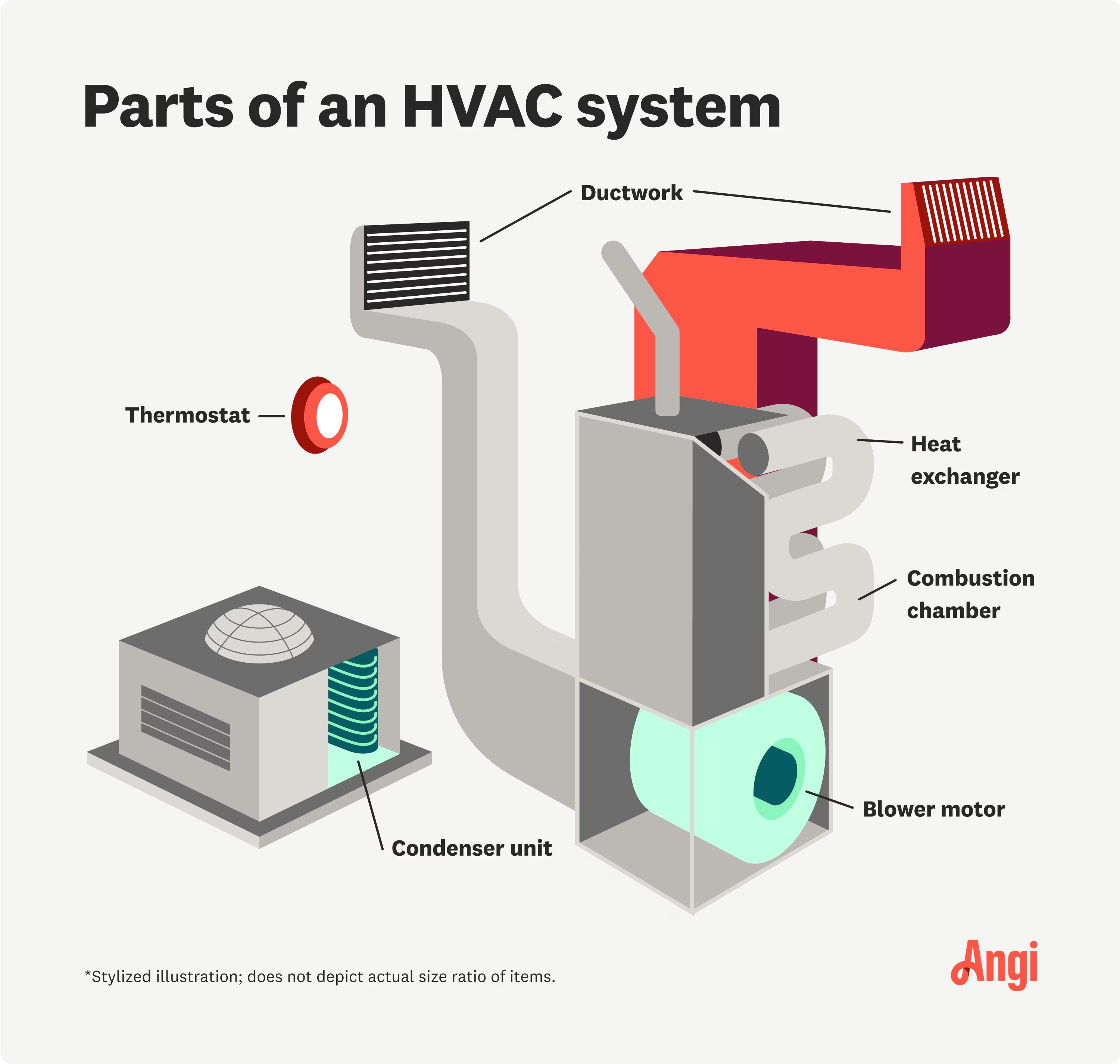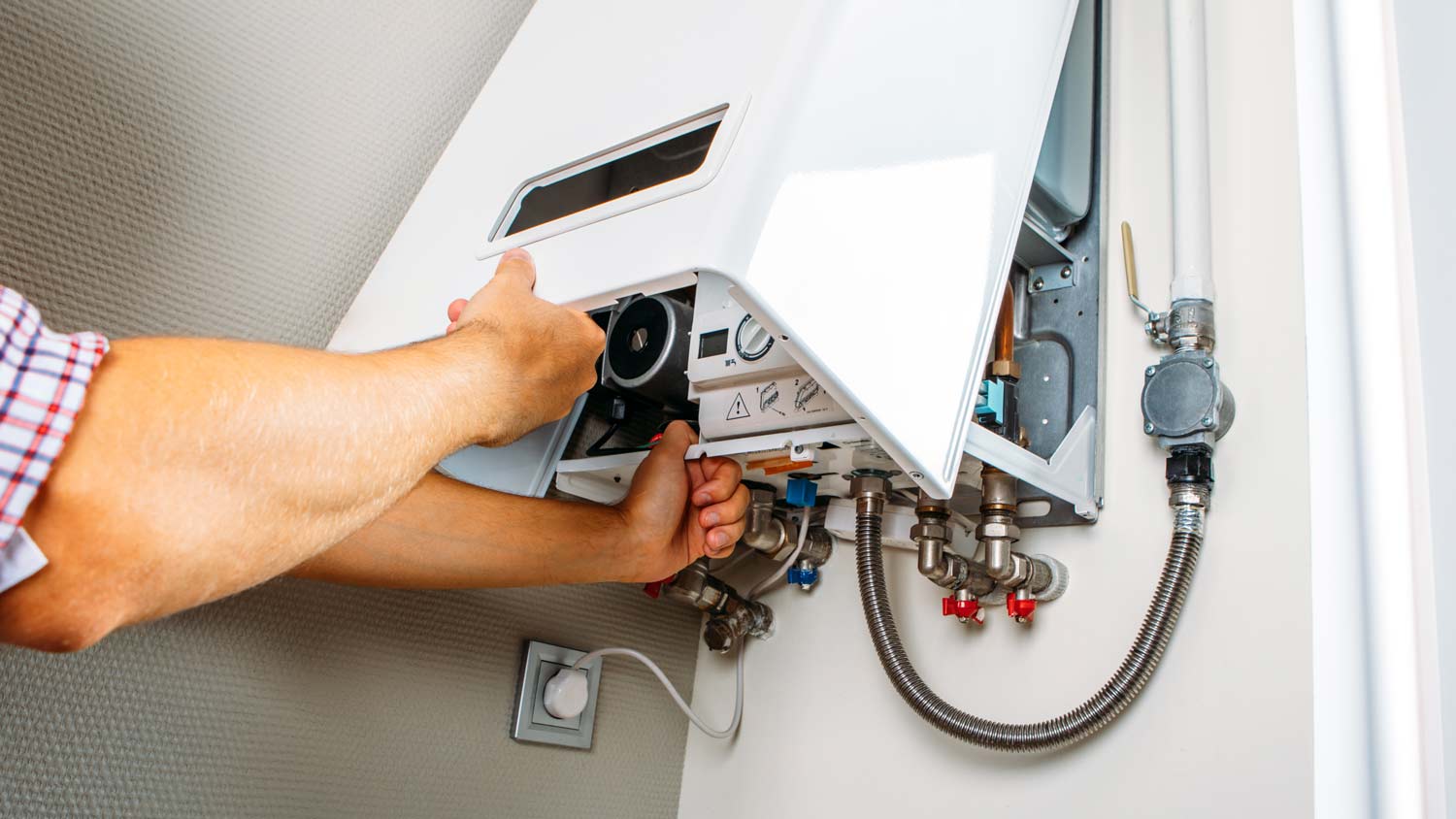
Springing for HVAC maintenance costs may seem like an extra—and easy-to-ignore—item on your checklist, but it will save you money in the long run.
Hint: It’s much more than just air conditioning


HVAC means “heating, ventilation, and air conditioning.”
HVAC is a broad term for the systems and components that heat and cool your home.
There are several kinds of HVAC systems, including split and packaged systems.
HVAC stands for heating, ventilation, and air conditioning. From regulating your home’s temperature to regulating air quality, an HVAC system plays an important role in keeping your living space comfortable. So, besides the meaning of the acronym, what is HVAC, exactly? Let’s break down the basics of these systems, including how they work, what they include, and more.

HVAC—an abbreviation for heating, ventilation, and air conditioning—refers to the devices, distribution system, and related components that heat and cool residential and commercial spaces. HVAC systems also improve indoor air quality by blocking out contaminants and controlling humidity.
When taking on this project, expect questions only a pro can answer. With our network of local pros, you'll get the job done and your questions answered—without the hassle and stress of doing it yourself.
There are different types of HVAC systems with varying parts, but most of them include indoor and outdoor units, each of which has its own parts. We’ll dive into the various types and parts of an HVAC system shortly, but at a basic level, here’s how the heating and cooling process works:
Units pull air from outside or inside the house.
The system heats or cools the air through mechanical ventilation.
The HVAC unit distributes the newly warm or cool air through ducts or a ductless unit to create a more comfortable temperature inside of a space.

In any HVAC system, there are multiple moving parts that work together to heat or cool your home. The most common components of an HVAC system include:
Air conditioner: Air conditioners remove heat and humidity from the indoor air and release it outside. There are several types of air conditioners, including central AC systems and ductless mini-split systems.
Heat pump: Heat pumps pull in outside air, heat it, and release the warm air into your home. They can also reverse this process to cool your home.
Furnace: Often powered by natural gas or electricity, furnaces create and release heat into your home to make it warmer.
Thermostat: You can use a thermostat to adjust the temperature inside your home and turn your HVAC system on and off.
Ductwork: Many HVAC systems use ductwork—which is a system of air ducts and vents—to circulate hot or cold air to different rooms.
Air handler: This component operates (and looks) like a furnace, but it works with an air conditioner or heat pump to distribute air throughout a home.

Choosing the right type of HVAC system for your home will depend on several factors, including your local climate, the size and layout of your house, and your budget. Here are a few of the most common systems to help you decide which one is best for your needs.
As the most common kind of HVAC system, split systems have both an indoor and outdoor unit (which is where the name “split” system comes from). The exterior unit is responsible for cooling the air and keeping hot air out, and the interior system warms the air and pushes it into the ductwork for distribution.
Hybrid systems are similar to split systems, but the main difference is that they can switch between gas and electricity, which makes them more energy efficient. They’re often pricier to install than split systems, but they may help reduce your utility costs in the long run.
Energy efficiency should be a top priority for any homeowner. This does require an initial investment, but it pays off in the long run with lower energy bills. Plus, there are often incentives and rebates available from local utility providers for making energy-efficient upgrades.
Packaged HVAC systems contain both the “indoor” and outdoor parts of an HVAC system in one unit. This unit goes outside your home—either sitting on a concrete slab or as a rooftop HVAC unit. They’re useful if you need to conserve space, but they don’t last as long as split systems.
Also known as duct-free or mini-split systems, ductless HVAC systems don’t use ductwork to circulate warm or cool air. Instead, they consist of individual units that can heat or cool a single room. This gives you more control over the temperature in a particular room, but they can cost more to install than other systems.
The cost to install an HVAC system depends on the type and size of the system, labor rates in your area, and other factors. However, here are some cost estimates for the most common kinds of HVAC systems.
| Type of HVAC System | Average Installation Cost |
|---|---|
| Split system | $3,900–$8,000 |
| Hybrid system | $2,500–$10,000 |
| Packaged heating and air system | $10,000–$14,000 |
| Ductless system | $2,000–$14,500 |
If your heating or cooling stops working, have a local HVAC company come take a look at your system. On average, HVAC repairs cost between $130 and $2,000, but prices depend on the specific problem and type of HVAC unit.
From average costs to expert advice, get all the answers you need to get your job done.

Springing for HVAC maintenance costs may seem like an extra—and easy-to-ignore—item on your checklist, but it will save you money in the long run.

Find out the average humidifier repair cost, what impacts pricing, and how to save. Get expert tips to budget for your humidifier repair.

Getting AC and furnace replacement done at the same time can lead to huge benefits for your wallet and your home. Here’s everything you need to know.

There are few things more important to homeowners than keeping their AC systems running. Use this guide on AC leak repair to keep your home cool and comfy.

If you need to repair a gas boiler or radiator heating system, you should first talk to a pro. Here are the top radiator repair questions you should ask.

Figuring out how to eliminate ductwork noise may require anything from replacing the ducts to changing the filter. Learn more about fixing this issue.